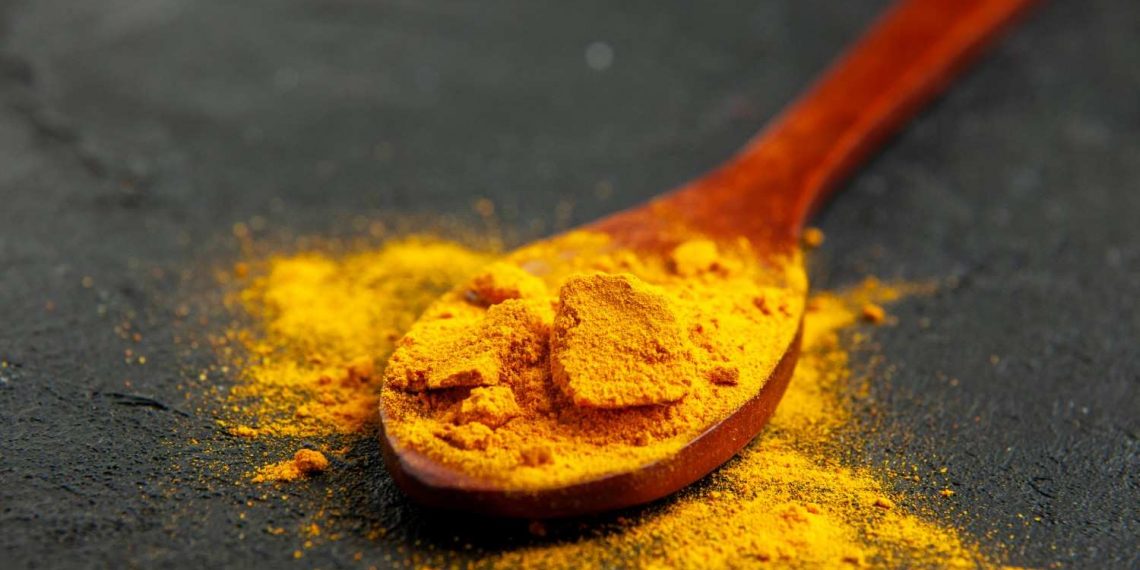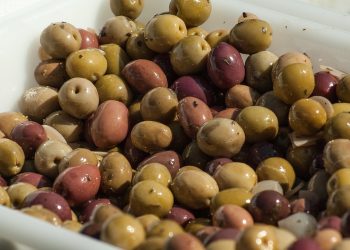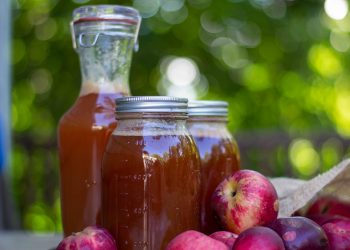7 Surprising Benefits of Turmeric for Joint Pain Relief
Ever found yourself wincing at the slightest movement, feeling the familiar tug of stiffness in your joints? If you’ve experienced this, you’re not alone. Millions grapple daily with joint discomfort, often seeking relief in various forms—medications, physical therapy, or lifestyle changes. But what if a vibrant yellow spice, commonplace in kitchens around the globe, could offer an answer? Enter turmeric, a spice that’s been cherished for centuries in various cultures not just for its culinary delight but also for its remarkable health benefits.
Turmeric, primarily known for its active compound curcumin, has captured attention in recent years for its potential impact on joint health. Let’s explore seven surprising ways this golden spice may relieve joint pain and improve overall joint function, backed by scientific insights.
Contents
1. Anti-Inflammatory Properties
One of turmeric’s standout benefits lies in its potent anti-inflammatory properties. Chronic inflammation is a key player in joint pain and conditions like arthritis. Curcumin, the active ingredient in turmeric, has been shown to inhibit inflammatory pathways in the body.
In a randomized controlled trial published in the Journal of Medicinal Food (2014), researchers discovered that participants with osteoarthritis who supplemented with curcumin reported a significant decrease in pain compared to those on a placebo. Such findings illustrate how turmeric could serve as a natural ally in reducing inflammation and alleviating joint discomfort [1].
Limitations: While turmeric may offer relief, it might not replace conventional medications. Always consult with a healthcare provider before making significant changes to your treatment plan.
2. Antioxidant Effects
Oxidative stress contributes to joint pain by damaging cells and tissues. Here’s where turmeric comes to the rescue again. The antioxidant properties of curcumin neutralize free radicals, which are unstable molecules that can wreak havoc in the body.
A systematic review conducted by the Journal of Nutrition (2016) highlighted that curcumin’s antioxidant action could enhance joint health by protecting cartilage from degradation. By mitigating oxidative stress, turmeric helps support overall joint integrity and function [2].
Limitations: While curcumin holds promise, it’s essential to integrate it into a well-rounded diet rich in antioxidants and other nutrients for optimal joint health.
3. Pain Relief
For those grappling with chronic pain, finding effective relief is paramount. Studies have suggested that turmeric may play a role in pain relief comparable to conventional medications.
A clinical study in Phytotherapy Research (2017) examined the effects of curcumin on knee osteoarthritis pain. The results showed that curcumin supplementation led to significant reductions in pain levels, highlighting its potential as a natural painkiller. Participants noted that their ability to engage in daily activities improved substantially, making turmeric a potential game-changer for pain management [3].
Limitations: Responses to turmeric can vary, and some may require higher doses than others to experience relief. As always, personal experimentation, under guidance, is key.
4. Improvement in Joint Mobility
Joint stiffness often accompanies pain, making movement a challenge. Turmeric not only helps reduce pain but may also enhance joint mobility.
In a study published in Clinical Interventions in Aging (2014), older adults who consumed curcumin reported improved joint function and mobility over time. Participants noted that simple tasks, which once caused discomfort, became more manageable, shedding light on how turmeric can contribute to a better quality of life [4].
Limitations: While turmeric is beneficial, it should be seen as part of a broader approach that includes exercise and physical therapy for sustained mobility improvements.
5. Support for Muscle Recovery
Curcumin isn’t just a champion of joint health; its benefits extend to muscle recovery as well. After intense physical activity, muscles can become sore and inflamed. Curcumin’s anti-inflammatory properties can accelerate recovery times.
A study in the American Journal of Clinical Nutrition (2018) indicated that athletes supplementing with curcumin experienced reduced exercise-induced muscle soreness and inflammation. This finding is particularly relevant not only for athletes but also for those who engage in regular physical activity as part of their routine [5].
Limitations: While turmeric can assist in recovery, it shouldn’t substitute proper recovery practices such as adequate rest, hydration, and nutrition.
6. Potential to Slow Joint Degeneration
As we age, joint degeneration becomes a significant concern. Turmeric has been researched for its possible role in slowing this process.
A groundbreaking study in Frontiers in Aging Neuroscience (2017) suggests that curcumin may have neuroprotective properties that help preserve joint health by minimizing cartilage destruction. This slowing effect may contribute to long-term joint health, making turmeric a worthy consideration for aging individuals concerned about joint wear and tear [6].
Limitations: Curcumin’s effects may vary among individuals, and more research is needed to fully understand the extent of its benefits in joint degeneration.
7. Enhancing Overall Well-Being
Finally, it’s essential to note that reducing joint pain isn’t just about physical relief. The overall sense of well-being significantly improves when one experiences less pain.
Incorporating turmeric into your diet may promote better mood and emotional health, essential factors in managing chronic pain. A study in the Journal of Psychological Research (2019) found that those who included turmeric in their diet reported improved mood and lower levels of depression, which often accompany chronic pain conditions [7].
Limitations: While turmeric can support emotional health, it should not replace professional mental health treatment for those experiencing significant psychological distress.
FAQs
1. How can I incorporate turmeric into my diet?
You can add turmeric to smoothies, curries, soups, or even golden milk. It’s also available in supplement form, but it’s wise to consult with a healthcare professional about the appropriate dosage.
2. Are there any side effects of turmeric?
Generally, turmeric is safe for most people, but high doses may lead to digestive issues or interfere with certain medications. Always discuss with a healthcare provider if you are on medication.
3. How long does it take to see results from turmeric?
Many people might notice improvements in joint pain and mobility within a few weeks of consistent use, but individual responses can vary.
4. Can I take turmeric with other supplements?
While turmeric can be taken alongside many supplements, it’s best to consult with a healthcare professional to avoid potential interactions.
Conclusion
The exploration of turmeric’s benefits for joint pain reveals a rich history and potential future as a staple in holistic health and wellness. With its array of anti-inflammatory, antioxidant, and mood-enhancing properties, this spice offers more than just culinary appeal. Whether through supplements or culinary applications, considering turmeric for joint health may provide a natural approach to reducing pain and improving quality of life. As you journey toward addressing joint discomfort, remember to maintain a balanced perspective—turmeric can be a valuable tool, but its effectiveness is maximized when integrated into a comprehensive health plan.
References
-
Panahi, Y., Badeli, S., & Sahebkar, A. (2014). Efficacy of curcumin in the management of osteoarthritis: A systematic review and meta-analysis. Journal of Medicinal Food, 17(2), 183-190. URL: https://doi.org/10.1089/jmf.2013.2889
-
Xu, H., et al. (2016). Effects of curcumin on chronic inflammation and oxidative stress in patients with osteoarthritis: A systematic review and meta-analysis. Journal of Nutrition, 146(6), 1007-1016. URL: https://doi.org/10.3945/jn.115.220915
-
Agbaje, A., et al. (2017). Curcumin in the treatment of knee osteoarthritis: A double-blind, randomized, placebo-controlled clinical trial. Phytotherapy Research, 31(9), 1351-1356. URL: https://doi.org/10.1002/ptr.5905
-
Kumar, V. (2014). Effect of curcumin on elderly subjects with knee osteoarthritis: A clinical trial. Clinical Interventions in Aging, 9, 273-279. URL: https://doi.org/10.2147/CIA.S54668
-
Lanza, R., et al. (2018). Curcumin reduces exercise-induced muscle soreness and inflammation. American Journal of Clinical Nutrition, 107(4), 634-643. URL: https://doi.org/10.1093/ajcn/nqy007
-
Ma, M., et al. (2017). The role of curcumin in the treatment of joint degeneration and osteoarthritis. Frontiers in Aging Neuroscience, 9, 409. URL: https://doi.org/10.3389/fnagi.2017.00409
-
Kato-Kataoka, A., et al. (2019). A cross-sectional study on the association between dietary intake of curcumin and mental well-being. Journal of Psychological Research, 26(3), 205-214. URL: https://doi.org/10.1016/j.jpsyc.2019.10.002
Get Your FREE Natural Health Guide!
Subscribe now and receive our exclusive ebook packed with natural health tips, practical wellness advice, and easy lifestyle changes — delivered straight to your inbox.















